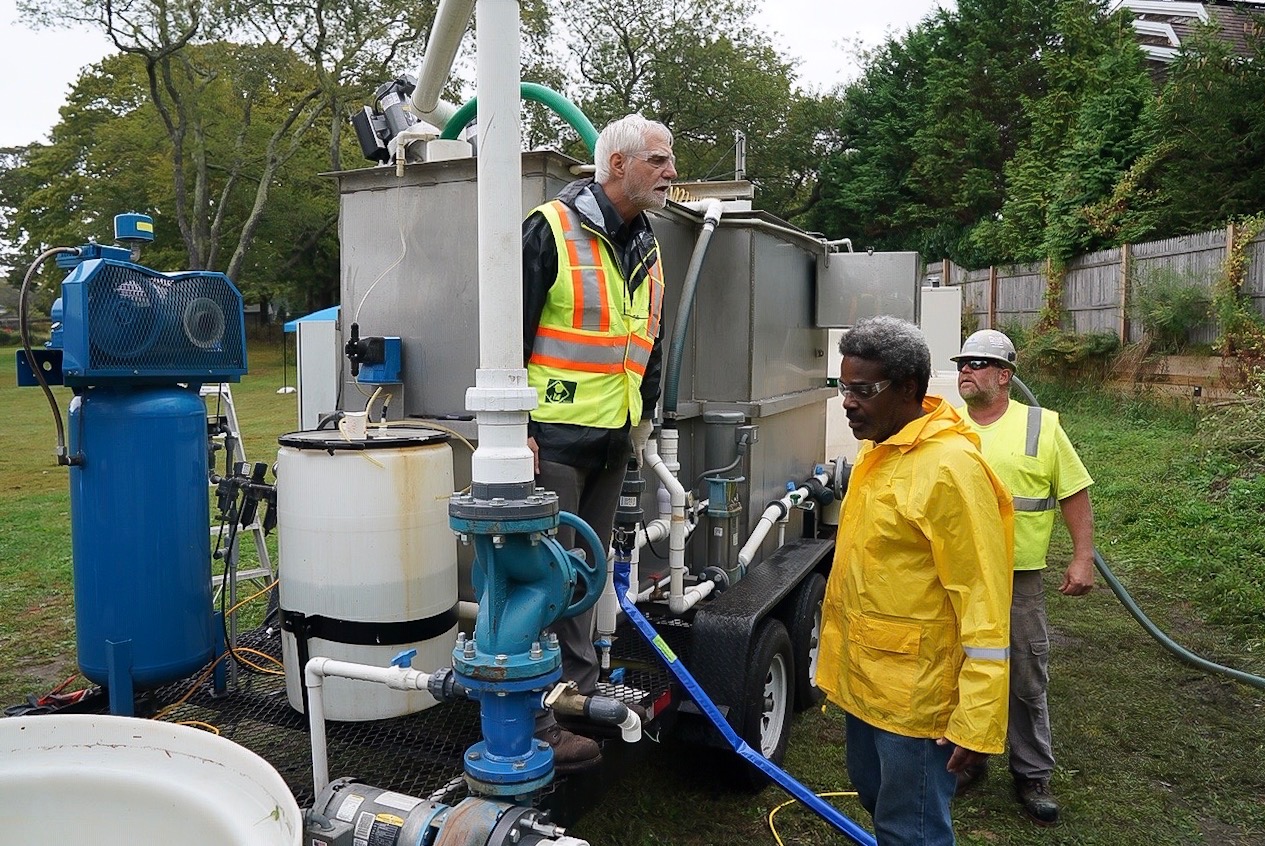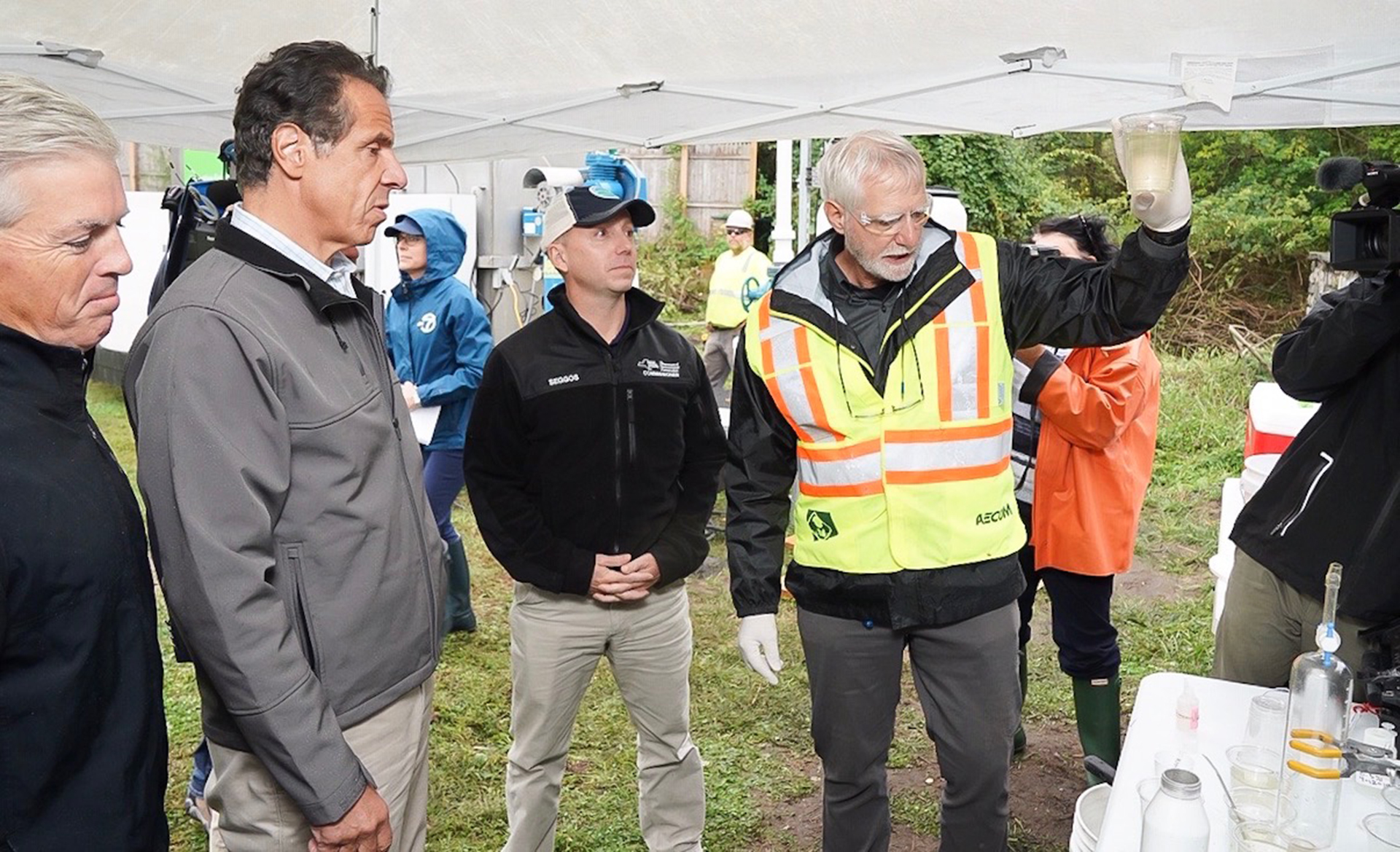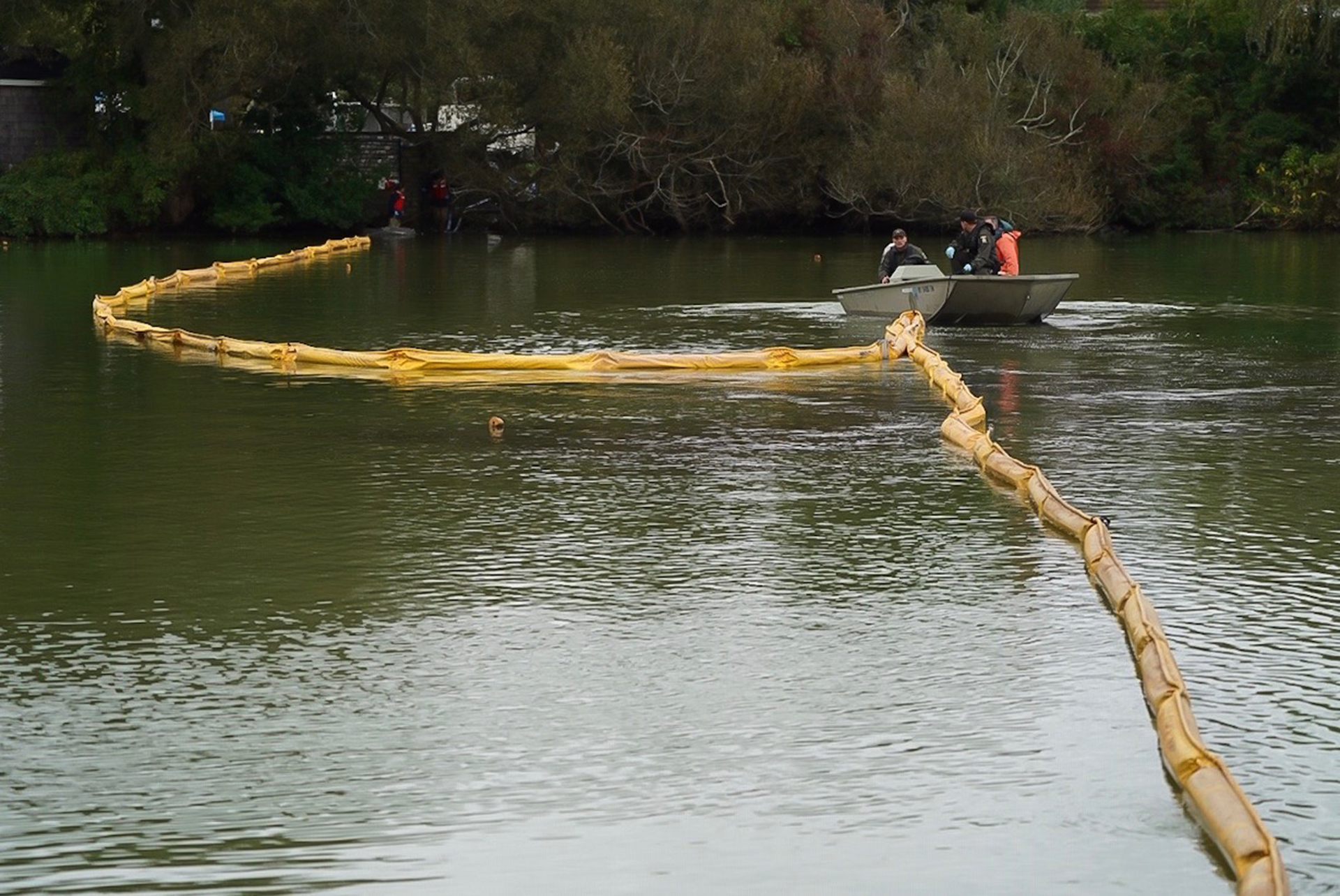Combating Harmful Algal Blooms In Lake Agawam


“We have a frightening problem with these algal blooms,” Governor Andrew Cuomo said. “These are toxic. They’re dangerous for pets. They’re dangerous for human consumption.”
This blue-green algae, or cyanobacteria, is no stranger to Lake Agawam. Since the state Department of Environmental Conservation began monitoring hundreds of lakes across New York in 2013, studying the more than 400 bodies the blooms have been detected in, none have experienced algal blooms more frequently than Southampton Village’s 40-acre body of water, which has seen the blooms present at least once per year since the record-keeping began.
Cleaning up the problem requires a complex solution, but the Cuomo administration and DEC might have at least a short-term solution of filtering the lake, which had the densest algal bloom ever recorded in Long Island waters.

As part of an $82-million comprehensive statewide initiative, a mobile harvester system, which separates algae from the surface of the water before returning clean water into the lake, has been installed in Lake Agawam. If the pilot project is successful, harvesters will be a statewide investment.
“The long-term answer is stop putting the pollutants into the body of water in the first place, but in the meantime, this is the best cutting-edge technology that we have been able to identify,” Cuomo said. “We want to get ahead of the curve. We want to try it. We want to see how it works. We want to see the volume of it. We want to see the product of it. That is what this is all about. If it works, it is very promising.”
Algal blooms are fueled by heat, phosphorus, and nitrogen, and the bacteria synthesize potent liver toxins and neurotoxins, presenting a serious human and animal health threat. Side effects could include nausea, vomiting, or diarrhea; skin, eye or throat irritation; or allergic reactions or breathing difficulties. Much of the nitrogen in Lake Agawam comes from runoff from the Southampton Village business district. Other sources of the problem include rain runoff from fertilized lawns and faulty or outdated septic systems.
“We are elated to partner with Governor Cuomo, who is taking the lead on harmful algae blooms and who will help us clean Lake Agawam in an unprecedented fashion,” said recently-elected Southampton Village Mayor Jesse Warren, who not long after taking office announced the formation of a Lake Agawam Conservancy Group to address public complaints about the freshwater body and others near it. “This innovative response attacks the issue head on. We are proud to work directly with Governor Cuomo as we invest in new technologies that protect our beloved water bodies and advance Long Island for years to come.”
The Cuomo administration recently learned of the new technology, which has been successful in other states, although very few have used it. Florida, which has its own state algae task force, is one.

“Safeguarding New York’s water quality is a top priority,” Cuomo said, “and we are providing direct assistance to communities to swiftly and effectively respond to harmful algal blooms.”
DEC Commissioner Basil Seggos said his department scientists and water quality experts will sample and closely monitor the lake for changes over the two weeks the filtration equipment will be tested, analyzing data to determine whether or how to use the technology next year. The harvester uses technology that is often employed within drinking water plants. The algae removed will be disposed of at a county treatment facility.
“Our state and local partners are investigating the causes of algal blooms across the state and pioneering cutting edge solutions to respond to these blooms and the threat they pose to New York’s waterbodies,” he said.
RoAnn Destito, commissioner for the office of general services, said the hope is introducing innovative programs such as this will help lead to sustainable solutions for the future of the state’s waterbodies. Suffolk County Legislator Bridget Fleming said she fully supports the investment.
“Algal blooms in this lake, the centerpiece of Southampton Village, have registered thousands of times higher than the standard for blue-green pigment set by the DEC. These toxins are a public health and safety risk to the surrounding community and negatively impacting our tourism-based economy,” Fleming said. “Waterways throughout our region are at a critical state and improvements to Lake Agawam are essential to Southampton Village’s economy and quality of life.”
desiree@indyeastend.com



